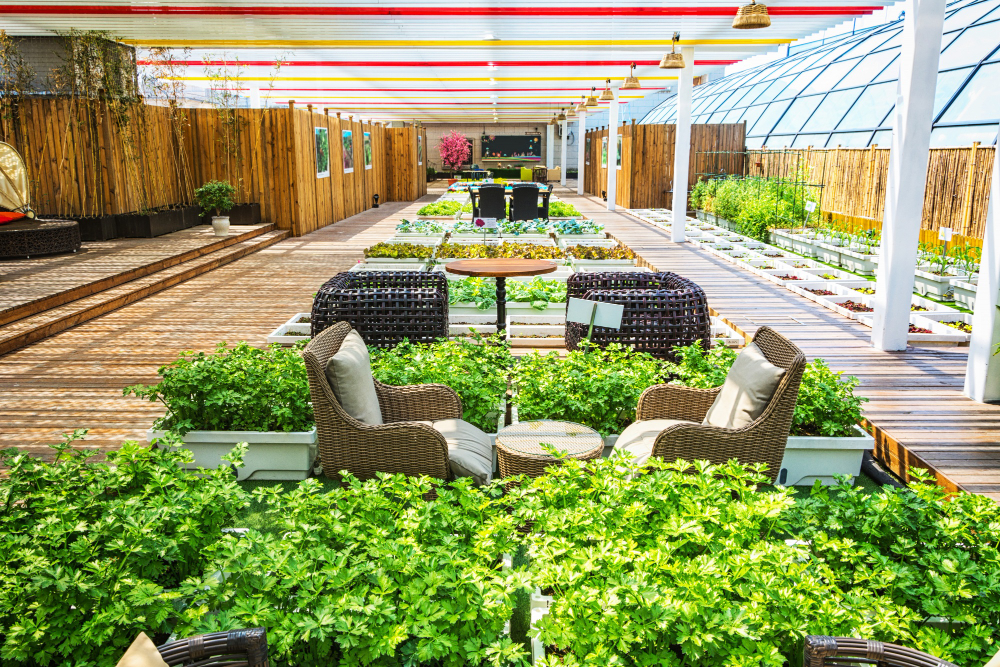New York homeowners seeking sustainable home solutions can benefit from green remodeling. This innovative approach not only enhances a property’s aesthetic appeal and functionality but also minimizes its impact on the environment.
With a growing emphasis on sustainability and energy efficiency, green remodeling has become a popular choice among environmentally conscious homeowners. This article will explore the numerous advantages of green remodeling in New York, including its environmental, economic, health, and social benefits.
Additionally, we will delve into various challenges and considerations surrounding green remodeling projects, providing valuable tips and insights to successfully implement these eco-friendly renovations.
Understanding Green Remodeling
Table of Contents
Green remodeling involves incorporating sustainable practices and materials throughout the renovation process. It aims to decrease the carbon footprint of a building while increasing its energy efficiency and overall sustainability. This comprehensive approach considers various aspects of a remodeling project, including waste reduction, energy-efficient upgrades, the use of eco-friendly materials, compliance with green building codes, and more. By implementing green remodeling techniques, homeowners in New York can contribute to a greener future while enjoying the numerous benefits that come with it.
Why Green Remodeling Matters in New York
Green remodeling is a crucial solution in New York, where rapid urbanization and increased energy consumption pose significant environmental challenges. The state has set ambitious goals to reduce greenhouse gas emissions and improve sustainability. By embracing green remodeling practices, homeowners can actively contribute to these objectives. Moreover, green remodeling initiatives align with New York’s commitment to fighting climate change, optimizing energy usage, and creating a healthier living environment for its residents.
Environmental Advantages of Green Remodeling
Green remodeling offers a multitude of environmental benefits that go beyond reducing carbon footprint and conserving energy. Techniques and materials employed during the remodeling process greatly influence the project’s overall sustainability.

Reducing Carbon Footprint
Green remodeling significantly reduces carbon dioxide emissions, leading to a positive impact on the environment. By implementing energy-efficient upgrades and adopting sustainable materials, homeowners can minimize their carbon footprint and contribute to a greener New York.
Energy-Efficient Upgrades
Energy-efficient upgrades are an integral part of green remodeling that helps optimize energy consumption within a home. By incorporating these upgrades, homeowners can reduce their dependence on non-renewable energy sources and decrease their utility bills.
- Sustainable Lighting Solutions: Switching to energy-efficient lighting options like LED bulbs can significantly impact energy consumption. These bulbs consume less energy and have a longer lifespan than traditional incandescent bulbs.
- Efficient HVAC Systems: Upgrading heating, ventilation, and air conditioning (HVAC) systems to energy-efficient models can reduce energy waste and provide better temperature regulation.
Sustainable Materials
The choice of materials used in green remodeling projects is crucial in enhancing sustainability efforts.
- Eco-Friendly Flooring Options: Opting for sustainable flooring materials, such as bamboo, cork, or reclaimed wood, reduces the environmental impact and promotes responsible resource usage.
- Recycled and Reclaimed Materials: Incorporating recycled or reclaimed materials, like countertops made from recycled glass or salvaged wood, reduces waste and adds a unique touch to the remodel.
Waste Reduction and Recycling
Efficient construction debris management helps minimize waste and facilitates recycling, contributing to a more sustainable remodeling process.
- Effective Construction Debris Management: Proper sorting and disposal of construction waste can ensure that recyclable materials are diverted from landfills. It is essential to work with contractors with an established recycling program.
Economic Benefits
Green remodeling offers numerous economic advantages, including long-term cost savings, increased property value, and access to government incentives and tax credits.
Lowering Utility Bills
One of the most significant economic benefits of green remodeling is reducing utility bills. By enhancing energy efficiency, homeowners can experience substantial savings over time.
Government Incentives and Tax Credits
New York homeowners undertaking green remodeling projects may be eligible for government incentives and tax credits. These financial benefits can offset initial investment costs, encouraging more homeowners to embrace sustainable remodeling.
Increased Property Value
Green remodeling can significantly enhance a property’s value. Buyers are increasingly attracted to energy-efficient and environmentally conscious homes, leading to higher resale values for those incorporating sustainable practices.
Long-Term Cost Savings
Though green remodeling may involve higher upfront costs, the long-term savings from reduced utility bills and lower maintenance expenses can outweigh the initial investment. Over time, homeowners are likely to enjoy significant economic benefits.

Health and Well-Being
Green remodeling not only positively impacts the environment and economy but also directly benefits the health and well-being of occupants.
Improved Indoor Air Quality
Indoor air quality can significantly impact overall health and well-being. Green remodeling prioritizes using materials and techniques that minimize indoor air pollution.
- Non-Toxic Paints and Finishes: Low or zero-VOC (volatile organic compounds) paints and finishes ensure better indoor air quality, emitting fewer harmful pollutants.
- Air Purification Systems: Installing air purification systems can enhance indoor air quality by removing impurities and allergens, providing occupants a healthier living environment.
Enhancing Comfort and Livability
Green remodeling focuses on creating spaces that promote comfort and livability. By incorporating sustainable design elements, homeowners can experience improved quality of life within their renovated spaces.
Reducing Allergens and Toxins
Green remodeling eliminates or minimizes the presence of potential allergens and toxins in the home. This leads to a healthier living environment and a reduced risk of respiratory issues and other health concerns.
Compliance with Regulations
Green remodeling ensures compliance with relevant green building codes and standards imposed by authorities in New York.
Green Building Codes in New York
New York has implemented green building codes to encourage the adoption of sustainable practices in construction and remodeling projects. These codes outline specific requirements for energy efficiency, resource conservation, and more.
Energy Efficiency Standards
Green remodeling projects in New York must adhere to energy efficiency standards set forth by regulatory bodies. These standards aim to optimize energy usage and reduce wasteful practices.
Sustainable Building Practices
To achieve compliance with green building codes, green remodeling projects must embrace sustainable building practices. This involves considering energy efficiency, waste reduction, and other environmental aspects throughout the remodeling process.
Resilience and Disaster Preparedness
Green remodeling contributes to a property’s resilience and preparedness in climate change-related challenges and natural disasters.
Climate Adaptation and Green Remodeling
With climate change leading to increased extreme weather events, green remodeling becomes crucial in adapting properties to withstand such challenges.
Weather-Resistant Construction Methods
Green remodeling incorporates weather-resistant construction methods and materials that can withstand strong winds, heavy rains, and other weather-related risks.
Mitigating Flooding and Storm Damage
In areas at risk of flooding or storm damage, green remodeling can incorporate strategies to minimize potential impact and enhance a property’s resilience.
Social Benefits
Beyond the environmental and economic advantages, green remodeling contributes to various social benefits that positively impact communities.
Supporting Local Economies
By opting for green remodeling, homeowners can actively contribute to the local economy while fostering sustainability within their community.
- Hiring Local Contractors: Engaging local contractors for green remodeling projects helps stimulate the local economy and create job opportunities within the community.
- Using Locally Sourced Materials: Prioritizing locally sourced building materials further supports local businesses and reduces transportation carbon emissions.
Community Engagement and Sustainability
Green remodeling projects can serve as catalysts for community engagement and sustainability initiatives. By showcasing sustainable practices, homeowners can inspire others to adopt similar principles.

Challenges and Considerations
While green remodeling offers numerous benefits, it is essential to address the challenges and considerations that may arise during the planning and execution of these projects.
Initial Costs and Budgeting
Green remodeling projects may involve higher upfront costs compared to traditional remodeling. Budgeting and assessing the financial commitment beforehand are essential steps in successfully implementing sustainable renovations.
Finding Green Building Professionals
Finding experts experienced in green remodeling can be challenging. It is essential to locate professionals who have the necessary knowledge and expertise in sustainable building practices.
Balancing Aesthetics and Sustainability
Balancing aesthetic preferences with sustainable choices can be a potential challenge during green remodeling. Integrating eco-friendly materials and techniques while achieving the desired visual appeal requires careful planning and consideration.
Case Studies
Examining successful green remodeling projects in New York can provide valuable insights into the possibilities and outcomes of sustainable renovations.
Before and After Transformations
Case studies highlighting dramatic transformations achieved through green remodeling can inspire and guide homeowners in pursuing their own environmentally sustainable projects.
Lessons Learned from Real-Life Examples
Analyzing real-life examples of green remodeling projects can offer valuable lessons learned, helping homeowners make informed decisions and avoid potential pitfalls.
DIY Green Remodeling Tips
For homeowners who prefer a hands-on approach, implementing eco-friendly home improvement projects can be a rewarding and sustainable endeavor.
DIY Energy Efficiency Upgrades
Implementing energy-efficient upgrades independently allows homeowners to directly contribute to reducing energy consumption. This can include sealing air leaks, installing smart thermostats, or upgrading insulation.
Choosing Sustainable Materials
DIY green remodeling can involve selecting sustainable materials, such as salvaged wood for furniture or recycled glass for countertops. Choosing responsibly sourced materials adds a unique touch to the project while minimizing environmental impact.
Hiring a Green Remodeling Contractor
For those who prefer to work with professionals, selecting the right green remodeling contractor is crucial to achieving successful and sustainable outcomes.
Selecting the Right Professional
Homeowners should carefully vet potential green remodeling contractors to ensure they possess the necessary expertise and align with the homeowner’s sustainability goals.
Questions to Ask Potential Contractors
When interviewing potential green remodeling contractors, asking relevant questions can help gauge their experience and commitment to sustainable practices. Inquiring about their knowledge of green building codes and previous green remodeling projects enhances transparency and helps homeowners make informed decisions.
Checking Credentials and References
Verifying the credentials and references of green remodeling contractors is essential. Homeowners should inquire about certifications and memberships to reputable organizations or seek referrals from previous clients to ensure competence and reliability.
Financing Your Green Remodeling Project
To help overcome the initial investment barrier, exploring various funding options can make green remodeling more accessible.
Exploring Funding Options
Homeowners can investigate different avenues for financing their green remodeling project, suitable to their budget and financial circumstances.
Green Home Improvement Loans
Green home improvement loans are specifically designed to finance eco-friendly renovation projects. These loans often offer favorable terms and incentives, making them attractive.
Grants and Rebates
Sometimes, homeowners may be eligible for grants and rebates provided by government agencies or utilities as incentives for implementing sustainable remodeling practices. Researching and applying for these incentives can significantly ease the financial burden of green remodeling.

Building a Green Remodeling Plan
Designing a comprehensive green remodeling plan is crucial to the project’s success. The plan outlines the sustainability objectives, prioritizes energy efficiency, and outlines eco-friendly renovation strategies.
Prioritizing Energy Efficiency
A well-designed green remodeling plan places a strong emphasis on energy efficiency. Homeowners can maximize the project’s sustainability by identifying areas of high energy consumption and incorporating strategies to mitigate energy loss.
Eco-Friendly Renovation Strategies
The green remodeling plan should outline specific strategies to incorporate sustainable materials, products, and techniques throughout the renovation. This includes selecting environmentally friendly flooring options, embracing energy-efficient lighting solutions, and utilizing construction debris management practices prioritizing recycling and waste reduction.
The Green Remodeling Process
Adopting a systematic approach during the green remodeling process ensures that sustainability goals are met and proper protocols are followed.
Demolition and Deconstruction
Demolition and deconstruction practices play a significant role in waste reduction. Homeowners can minimize environmental impact during the remodeling process by salvaging and reusing materials whenever possible.
Energy Audits and Efficiency Upgrades
Conducting energy audits and implementing efficiency upgrades are essential in green remodeling projects. These audits help identify areas of energy loss and provide guidance on appropriate upgrades to optimize energy consumption.
Sustainable Materials Procurement
During the remodeling process, it is crucial to prioritize the procurement of sustainable materials. This may include sourcing locally produced materials or selecting certified environmentally friendly products.
Waste Management and Recycling
Efficient waste management practices should be in place to ensure construction debris is properly disposed of and recycled whenever feasible. This helps minimize the environmental impact of the remodeling project.
Green Building Inspections
Engaging green building inspectors helps ensure that the renovations align with green building codes and sustainability objectives. These inspections authenticate the success of green remodeling, verifying the adherence to industry standards.
Post-Remodeling Maintenance and Care
Maintaining the sustainability of a green remodeled home requires specific practices to preserve energy efficiency and minimize the environmental impact.
Energy Monitoring and Conservation
Monitoring energy consumption and implementing conservation techniques help homeowners understand their ongoing energy usage and identify opportunities for further efficiency improvements.
Eco-Friendly Cleaning and Maintenance
Adopting eco-friendly cleaning products and practices minimizes introduction of harmful chemicals, maintaining a healthy indoor environment.
Measuring the Impact
Assessing the achieved energy savings and overall environmental benefits is crucial to gauge the success of a green remodeling project.
Tracking Energy Savings
Regularly tracking energy savings allows homeowners to quantify the impact of their green remodeling project and provides a tangible measure of energy efficiency improvements.
Environmental Benefits
Evaluating the overall environmental benefits, such as reduced carbon emissions, waste reduction, and improved indoor air quality, helps homeowners understand the full extent of their contribution to sustainability.
Future Trends in Green Remodeling
As sustainability gains prominence, the green remodeling industry continues evolving with emerging technologies and trends.
Innovations in Sustainable Home Improvement
Innovative technologies and materials are constantly being developed to enhance the sustainability and efficiency of green remodeling projects.
Emerging Technologies
Emerging technologies offer exciting possibilities for future green remodeling endeavors, from smart home automation systems to energy-generating building materials.
Growing Green Remodeling Trends
As more homeowners prioritize sustainability, green remodeling trends continue to expand. This includes the increased use of renewable energy sources, water-saving fixtures, and integration of eco-friendly smart home technologies.
FAQs (Frequently Asked Questions)
Q1: Is green remodeling more expensive than traditional remodeling?
- Green remodeling can cost more upfront due to eco-friendly materials and energy-efficient systems. However, it often leads to long-term savings through reduced utility bills and maintenance expenses.
Q2: How can I find eco-friendly building materials in New York?
- You can find eco-friendly building materials in New York by visiting sustainable building supply stores, consulting with green building professionals, or researching local suppliers specializing in environmentally friendly products.
Q3: Are there any financial incentives for green remodeling in New York?
- Yes, New York offers incentives such as tax credits, rebates, and grants to promote green remodeling. Check with local government programs and utilities for specific opportunities.
Q4: Can I pursue green remodeling on a budget?
- Yes, green remodeling can be budget-friendly. Start by prioritizing energy-efficient upgrades, consider DIY options, and explore financing solutions like green home improvement loans.
Q5: What are the top energy-efficient upgrades for homes in New York?
- The top energy-efficient upgrades for New York homes include improving insulation, upgrading windows and doors, installing a programmable thermostat, and investing in energy-efficient appliances.
Q6: How long does a typical green remodeling project take to complete?
- The duration of a green remodeling project varies depending on the scope and complexity. Smaller projects might take weeks, while extensive renovations could span several months.
Q7: What are the environmental impacts of green remodeling compared to conventional remodeling?
- Green remodeling typically has a lower environmental impact compared to conventional remodeling due to reduced energy consumption, less waste generation, and the use of sustainable materials. It helps conserve resources and reduces greenhouse gas emissions.
Conclusion
The benefits of Green Remodeling in New York are manifold, providing advantages for homeowners, the environment, and society. Homeowners can create healthier and more energy-efficient living spaces by reducing carbon footprints, lowering utility bills, and improving indoor air quality.
Moreover, green remodeling contributes to the economic growth of local communities, promotes resilience against climate change, and adheres to green building regulations. Implementing a green remodeling plan with the help of experienced contractors and considering available financing options ensures successful and sustainable home renovations.
With its numerous advantages, green remodeling in New York paves the way for a brighter and greener future.

